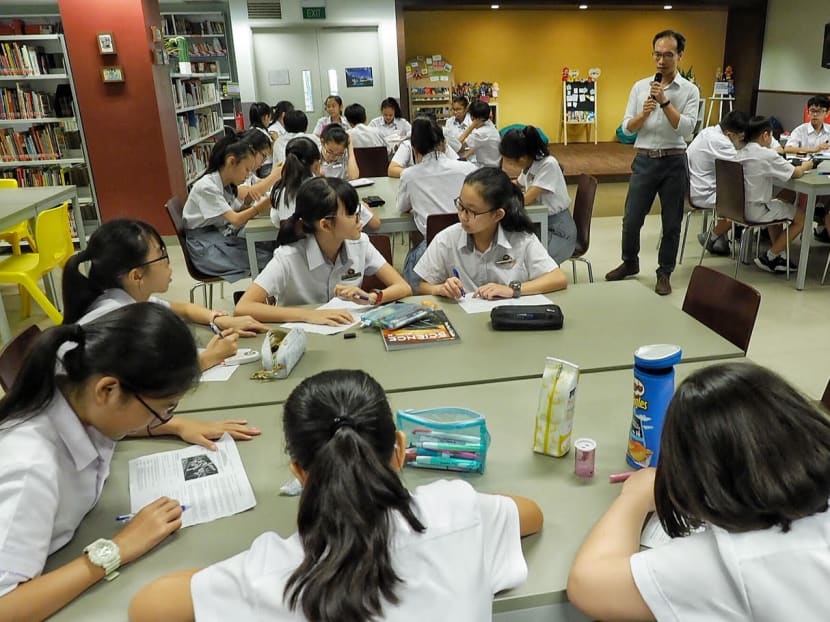Housing type and household income better indicators of social mixing in schools
I disagree with Education Minister Ong Ye Kung’s point that when students of a secondary school come from a larger number of primary schools, this means a better social mix.
Housing type and household income, measured against national averages, are better indicators of social mixing in schools.

Housing type and household income, measured against national averages, are better indicators of social mixing in schools, the writer says.
I refer to the report, "Social mixing in schools has improved based on government indicator, 'must not be left to chance'" (Dec 27).
I disagree with Education Minister Ong Ye Kung’s point that when students of a secondary school come from a larger number of primary schools, this means a better social mix.
The quicker pace of increase borne out by this indicator in schools that offer the Integrated Programme (IP), compared with non-IP schools, has more to do with changes in primary-school enrolment policies, such as those giving priority to students living near a school and reserving places for children whose parents have no affiliation to the school.
These policies have ensured a good social mix in primary schools. Parents are not, as the Ministry of Education suggested, “increasingly prepared to send their children to neighbourhood primary schools”.
It appears to me that the social background of top students from each primary school may not be very different.
I am a mother of four children attending different IP schools, and often, some of their schoolmates are the “sole representatives” of a particular primary or secondary school. This means that only one student from a primary or secondary school had been admitted to a certain IP secondary school or junior college.
When top students choose IP schools, proximity is not a condition MOE imposes. This is also not uppermost on the minds of parents of older children, especially those with the means to hire private transport to take their children to school.
It is unsurprising that non-IP schools register slower improvement on this indicator. There is no incentive, such as prestige, to attend a non-IP school far from home. When a child does not qualify for any of the schools he chooses during the admission exercise, the child will be assigned a secondary school based on proximity to his home. This could mean that more students from the same primary schools are admitted to a nearby non-IP secondary school.
Housing type and household income, measured against national averages, are better indicators of social mixing in schools than the number of primary schools that a secondary school’s students are from.
Have views on this issue or a news topic you care about? Send your letter to voices [at] mediacorp.com.sg with your full name, address and phone number.






